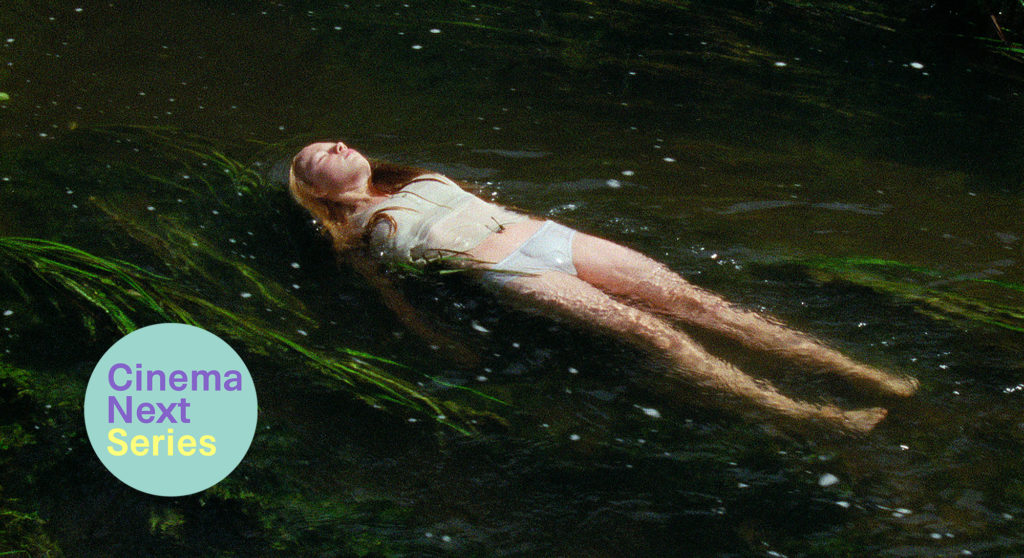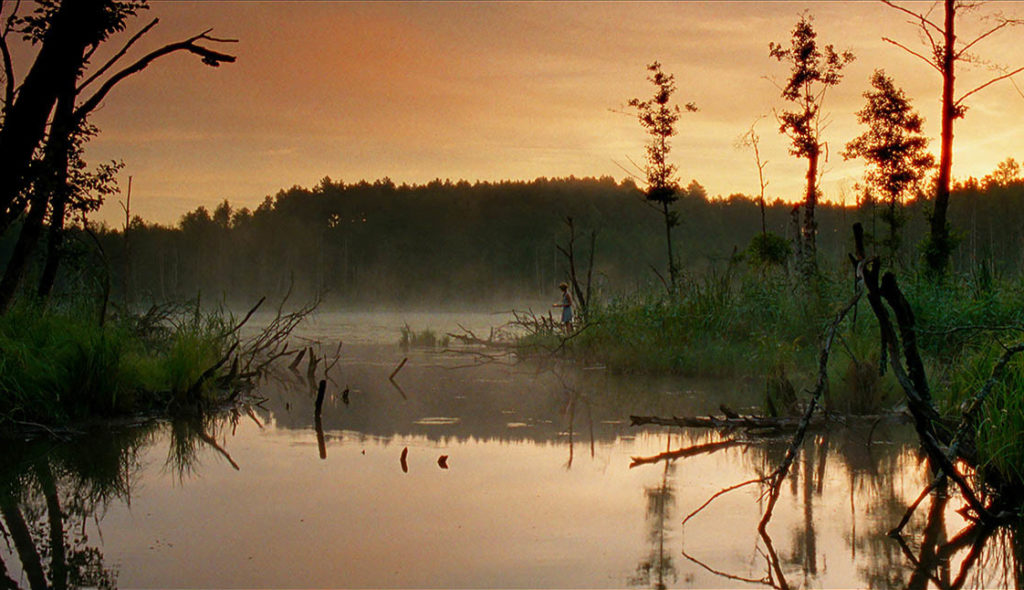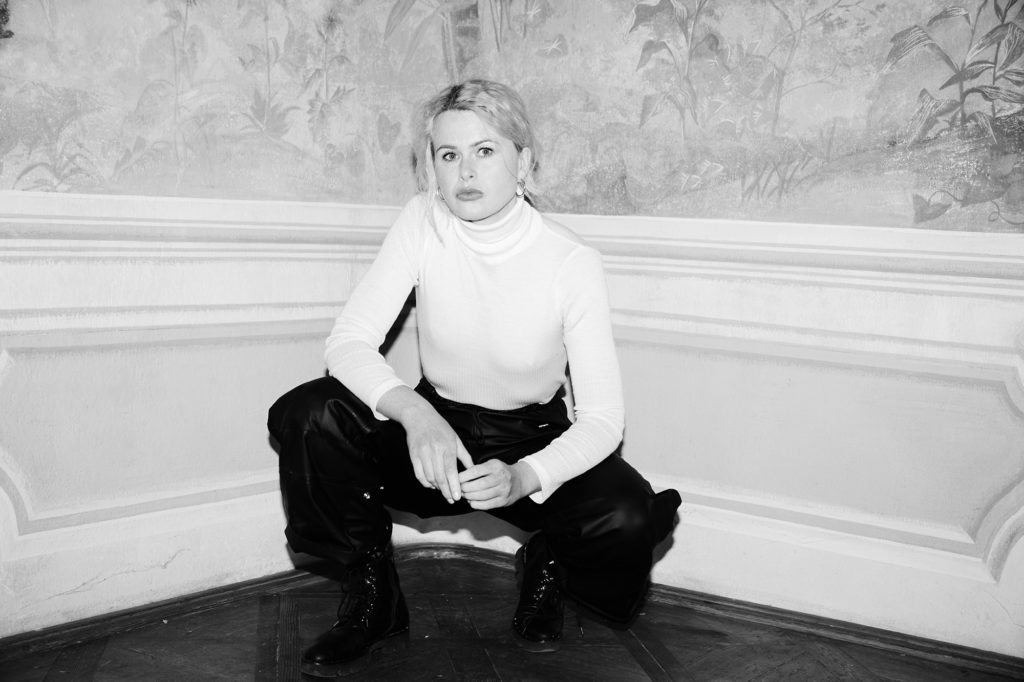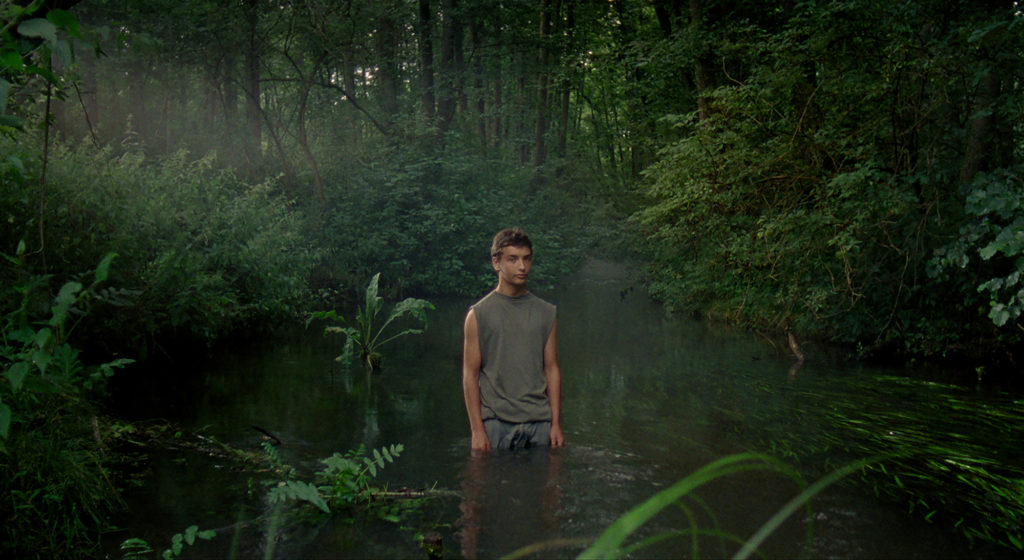Für den träumerisch-sommerlichen Kurzfilm »Zalesie (Virgin Woods)« war die Filmakademie-Wien-Absolventin Julia Zborowska zu Recht für den Österreichischen Filmpreis 2019 nomiert. »Zalesie« ist einer der schönsten Kurzfilme der letzten Jahre und jetzt neu kostenfrei in der Cinema Next Series zu streamen.

Wo die Grenze zwischen Traum und Wirklichkeit verläuft, kann man in »Zalesie (Virgin Woods)« nicht genau sagen. Das verwunschene polnische Waldstück, an dessen Rand die elfjährige Joanna allein mit ihrer um den verstorbenen Vater trauernden Mutter wohnt, ist ebenso märchenhaft wie die Tagträume des Mädchens selbst. In diesen trifft sich die Heranwachsende bei Tagesanbruch mit ihrem Geliebten. Halb im kindlich-unschuldigen Spiel versunken, halb sich ihrer aufkeimenden körperlichen Reize bewusst, streunt das blonde, elfenhafte Mädchen am liebsten in der idyllischen Morgenlandschaft umher. Die verzauberte Stimmung des Sonnenaufgangs wird dabei zum Spiegel von Joannas Schwellendasein, ihrer erwachenden Sexualität. Ein Schuss fällt … »Zalesie ist kein Ort, es ist ein Seelenzustand.«
— (Anna Steinbauer, Katalogtext Diagonale ’18)
»Zalesie (Virgin Woods)« ist die nächste Veröffentlichung in der Cinema Next Series, die regelmäßig auf der Streamingplattform Kino VOD Club kostenlos spannende Filme von heimischen Filmtalenten präsentiert.
Wir haben der Regisseurin ein paar Fragen gestellt, die sie uns auf Englisch beantwortete.
Cinema Next: In deinen eigenen Worten: Worum geht es in »Zalesie (Virgin Woods)«?
Julia Zborowska: I longed to capture the beauty of fleeting time. A time that had flowed out of my reach. And so, I embarked on this journey across two landscapes: that of nature as well as that of the valley between girlhood and womanhood.
Eleven-year-old Joanna, at the verge of womanhood, as she lays still in the ice-cold water, holding onto the seaweed. She does not want to accept the flow of the river, the passing of time. An empty space, a great secret, like the first period, something a woman will eventually forget, at least what it really felt like.
Was waren wichtige Ausgangspunkte für dein Drehbuch? Bilder, Themen, Szenen?
I love going into another world, and I don’t really like to know too much ahead of time. I need the feeling of discovery, the slow process when the puzzle comes together. I tend to hold onto the invisible rather than to the visible. And trust it.
There was no script, just a vision, pictures, strong emotions and a long time of preparation. The story wasn’t there until we began to shoot. It was a failure at first but this experience gave me a strong feeling for how important it is to be in the moment. I was literally creating the story in the moment.
We had so few film reels that we mostly did single shots of every scene. Rarely twice. It was a very organic work. I knew the place very well as I had grown up in these woods. I had a feeling for the light and memory of where to go in order to get what we were looking for.
And to answer the question: What was the most important? The failures were the most important. The imperfection in the eye of expectation. The sudden unexpected beauty.
Dein Film streift viele Themen: Kindheit, Sexualität, Sterben, Traum und Realität, das Leben in der Provinz und Natur … Wie bist du vorgegangen, all das in einen Film zu packen?
To answer this, I would like to give an example of the process of how themes or memories can translate into images:
We traveled to the woods with Jakob Sauer, the cinematographer, one month prior to the shoot. So that he could collect some memories of these places for himself. I drew a map for him on a piece of paper of how to get to the lake on the marshland, where the only access was over the dam built by beavers. He came back in the evening and he was happy and wet, with pictures he took there, approaching the lake from an unexpected place as he did not fully follow my map. This later turned out to be the same perspective he would take in this beautiful shot by the lake at sunrise at 4:30 a.m. in the morning which is in the middle of the movie. He was holding the memory of this place, I believe.

Hast du Vorbilder oder Referenzen, die dich in deiner Arbeit oder auch für »Zalesie« beeinflussen bzw. beeinflusst haben?
I wanted to shoot the pictures I remembered. Something I had collected in the unconscious areas of my mind between the first tree of my childhood and the deep, dark back of the Mona Lisa. The Louvre was the first spot I visited abroad. I grew up surrounded by nature and in constant touch with the artists who would visit my parents in our home.
I believe the movie is like the director. You can only give who you are. And the combination of all those efforts and visions create the unique recipe of the film. Growing up in the space of imagination and solitude. That bizarre feeling when the landscape is actually a room with walls behind which the greatest secret hides: My memories were the strongest reference.
More precisely, there are images from other films that we were inspired by. Individual pictures. When the girl was crossing the bridge, we tried to get the Lars von Trier light from the crossing of the bridges scenes from »Antichrist«. Or we wanted some nature shots to be very similar to a shot from a Tarkovsky movie. It’s just the trees and the wind – from »Mirror«.

Die Locations – das Haus, die Wälder, die Flusslandschaft, das Sommerfest – tragen den Film. Wie wichtig war es für dich, wo du den Film drehen wirst?
A sense of place is so critical in cinema because we want to go into another world, another mood. So you try to put all these things together, these little details, parts of the bigger picture, the puzzle, to create that sense of place. It has a lot to do with light, sound and the temperature of the air. We put so much into capturing the water and the wetness in the air. Filming outdoors between 4:00 and 8:00 a.m. and 5:00 and 9:00 p.m. in the evening, except for the scene in the water, which we shot at midday. So, it’s not enough to have an idea. You have to pinpoint the exact moment when you can recreate that idea. The pilgrimages to the middle of the woods before day breaks. Watching the sun set and rise every time felt like a vast mystery.
Nora Czamler did the sound design. I remember us sitting in front of the computer listening to the sounds of waterfalls from the sound data bank. I said, »Nora that’s not going to work. We need our waterfall.« However crazy it might sound, Nora traveled with me to Poland, 900 km into the national park to record this waterfall and many other sounds in their original locations. It felt right.
Much of filmmaking is common sense and intuition. I guess that is because life is filled with abstractions and the only way we make heads or tails of it is through intuition. Intuition is seeing the solution – seeing it, knowing it. It’s emotion and intellect coming together.

Welches ist deine Lieblingsszene in »Zalesie« und warum?
When life and film somehow unite, that’s what I love best. I don’t have like a favorite scene. I feel like this film is built out of pictures. Before studying film directing, I studied painting. Since there was no real script for this movie, it also felt a bit like painting.
My favourite image from »Zalesie« is when Joanna (Agnieszka Piszczek) is lying motionless in the river’s ice-cold water, seven degrees. On that day of shooting, Agnieszka turned eleven and also had her first period. I was so exhausted and had not slept. Jacob was sick, and there was so much going on in my head. Suddenly a dragonfly flies into the frame and sits on Agnieszka. This moment was like a miracle. For me it was like a light from within.
The dragonfly stayed there, on Agnieszka’s body, for 30 seconds. It was the longest shot of the film. That moment when she was in the water, that’s when I felt thankful and the whole reason why I would make this movie became clear. It was in that moment that the bond between the real world of my childhood and the one that was being created in film was made. If you just go for it, there is magic waiting for you in the details.
Eine Interviewreihe in Kooperation mit Cinema Next – Junges Kino aus Österreich.
